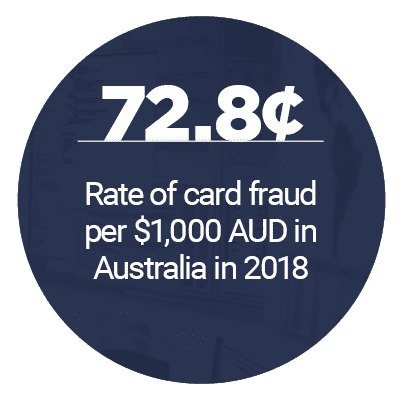Trending: How Facebook Unfriends Ad Fraudsters

Digital fraud continues to be one of the most pressing issues that marketplaces face today. Experts estimate that total fraud losses in 2018 totaled $3.9 trillion — an increase of 49.5% over the last 10 years. However, there is no consistent way of measuring fraud, as many victims are either unaware that they have been defrauded or have a vested interest in keeping their victimization private for fear of scaring off customers.
New initiatives, platforms and applications to fight fraud are being introduced on a regular basis, ranging from Visa’s fraud prevention suite, to Fujitsu’s blockchain-based DocumentFlow application. Other developers are leveraging various automation systems, which combat fraud by reducing the opportunities humans have to disrupt the system and increasing the digital payments’  transparency.
transparency.
In the August “Digital Fraud Tracker,” PYMNTS explores the latest developments in the digital fraud space, including emerging fraud threats and new fraud-fighting solutions from private corporations and world governments.
Developments Around the Digital Fraud World
Digital fraud is particularly threatening in Southeast Asia, despite the fact that the Association of Southeast Asian Nations’ (ASEAN) eCommerce market is projected to exceed $200 billion in value by 2025. A recent report found that ASEAN nations are projected to lose $260 million to online fraud this year, with eCommerce companies bearing the brunt of these losses. Account takeovers (ATOs), identity theft and phishing were found to be the most common methods of attack in this region.
Businesses are turning to a variety of solutions to fight fraud, including leveraging blockchain technology. Japanese information technology conglomerate Fujitsu recently introduced DocumentFlow, a new blockchain-based application that tracks the validity of digital assets, including documents, images, audio and video files, and determines if they have been manipulated.  The application uses distributed ledger technology as a notary system, storing data on a blockchain so the determination cannot be altered.
The application uses distributed ledger technology as a notary system, storing data on a blockchain so the determination cannot be altered.
Some of these anti-fraud measures are working, according to recently published research from the Australian Payments Network. The network found that Australia’s 2018 card fraud rate was 72.8 cents per $1,000 AUD of card spending, down from 75 cents the year prior. This is the first year-over-year (YoY) decline in card fraud since AusPayNet first reported this statistic in 2006. The growth of card-not-present (CNP) fraud also decreased, slowing to 2.4 percent in 2018 from 13.9 percent in 2017.
For more on these and other digital fraud news items, download this month’s Tracker.
How Facebook Stays Ahead of Advertising Fraud
Social networking giant Facebook is a power player in the advertising market, with 2.3 billion active monthly users and $16.6 billion in quarterly ad revenue. Its broad presence makes it an extremely attractive target for fraudsters, which employ a variety of illicit methods to make off with their slice of the pie.
For this month’s Feature Story, PYMNTS spoke with Rob Leathern, Facebook’s director of product management, on how the company prevents ad fraud via automate d detection systems and thorough advertiser vetting.
d detection systems and thorough advertiser vetting.
Deep Dive: Ad Fraud and Its Toll On Advertisers, Publishers
Ad fraud is one of the most prevalent forms of digital fraud, with advertisers expected to lose more than $5.8 billion because of it this year. Bad actors are not the only ones at fault, either, as dishonest publishers are also taking advantage of advertisers via false clicks and stacked ads. The rise of real-time bidding (RTB) has only caused the plague of ad fraud to get worse.
This month’s Deep Dive explores the various shapes that ad fraud can take, as well as how publishers and developers are fighting back.
About the Tracker
The “Digital Fraud Tracker,” done in collaboration with DataVisor, is your go-to monthly resource for updates on trends and changes in the world of digital fraud.
